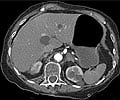It is estimated that 14% of young adults who have never smoked will become smokers between the ages of 18 and 24, and three factors predict this behavior.

In the United States, there is a 50% increase in the number of young adults who start smoking after high school. This trend prompted O'Loughlin and her team at the ESPUM to identify predictors of young adults starting to smoke which may lead to avenues for prevention. They analyzed data from a cohort study called "NDIT" (Nicotine Dependence in Teens), which began in 1999 in the Greater Montreal Area, in which nearly 1,300 young people aged 12-13 took part. In this cohort, fully 75% tried smoking. Of these young people, 44% began smoking before high school; 43% began smoking during high school, and 14% began after high school.
Not all, however, continued smoking, but among the "late" smokers, the researchers found that smoking onset is associated with three risk factors: high levels of impulsivity, poor school performance, and higher alcohol consumption. Explaining the three risk factors Some late smokers showed greater impulsivity compared to the other participants in the study. According to O'Loughlin, it is possible that impulsivity is more freely expressed when one becomes an adult, since parents are no longer there to exert control. "We can postulate that parents of impulsive children exercise tighter control when they are living with them at home to protect their children from adopting behaviours that can lead to smoking, and this protection may diminish over time," she explains. In addition, school difficulties increase the risk of becoming a smoker because they are related to dropping out of school and, seeking employment in workplaces where smoking rates are higher.
Finally, since young people are more likely to frequent places where they can consume alcohol, they are more prone to be influenced by smokers, or at least be more easily tempted. "Since alcohol reduces inhibitions and self-control, it is an important risk factor for beginning to smoke," warns O'Loughlin. Toward targeted prevention campaigns Smoking prevention campaigns usually target teenagers because studies show that people usually begin to smoke at age of 12 or 13. The phenomenon is well known, and numerous prevention programs are geared toward teenagers. "Our study indicates that it is also important to address prevention among young adults, especially because advertizing campaigns of tobacco companies specifically target this group," says O'Loughlin. "This is particularly important because if we can prevent smoking onset among young adults, the likelihood that they will never become smokers is high," she says.
Source-Eurekalert














